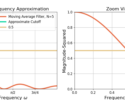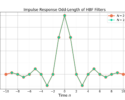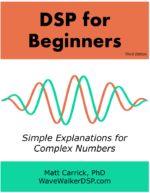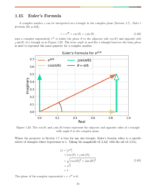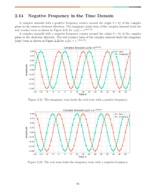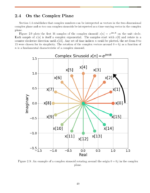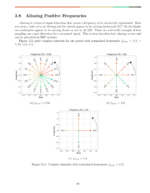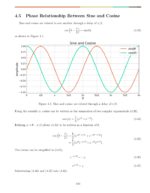Table of Contents
Introduction
Too often I find myself asking the questions “what is the Fourier transform of ![]() ”? “What is the inverse Fourier transform of
”? “What is the inverse Fourier transform of ![]() ?” Finding them in a book or on Wikipedia often takes too long so to save myself the time and hopefully be useful to others, I’ve provided the derivations for the Fourier transforms of x(t),
?” Finding them in a book or on Wikipedia often takes too long so to save myself the time and hopefully be useful to others, I’ve provided the derivations for the Fourier transforms of x(t), ![]() , x(-t) and
, x(-t) and ![]() below.
below.
More posts on DSP Math:
Fourier Transform
Fourier Transform of Conjugate
The Fourier transform of ![]() , the conjugate of x(t), is given by
, the conjugate of x(t), is given by
(2) ![]()
A double-conjugate is applied to (2)
(3) ![]()
and the inner conjugate is simplified as
(4) ![]()
A variable substitution is made for the frequency ![]() ,
,
(5) ![]()
such that (4) is written as
(6) ![]()
Using (1) the integral in (6) is simplified to
(7) ![]()
such that
(8) ![]()
Fourier Transform of Time Reversal
The Fourier transform of x(-t), which is time reversed x(t), is given by
(9) ![]()
Substitute ![]() such that (9) is written as
such that (9) is written as
(10) ![]()
where
(11) ![]()
Swapping the integration limits in (10) cancels the negation so the integral is written as
(12) ![]()
Substitute for the frequency f,
(13) ![]()
such that (12) is written as
(14) ![]()
Using (1) the Fourier transform of x(-t) is written as
(15) ![]()
which is simplified as
(16) ![]()
The blog on negative frequency showed that positive frequencies rotate in a counter-clockwise direction around the unit circle. My interpretation of (16) is that reversing the time, x(-t), also reverses the direction rotation around the unit circle for positive frequencies, which is why the frequencies in X(-f) are reversed as well.
Fourier Transform of Conjugate and Time Reversal
The Fourier transform of ![]() , the conjugated and time reversal of x(t), is given by
, the conjugated and time reversal of x(t), is given by
(17) ![]()
A double conjugate is applied over (17),
(18) ![]()
and evaluating the inner conjugate leads to
(19) ![]()
A variable substitution is made for the time,
(20) ![]()
where
(21) ![]()
such that (19) is written as
(22) ![]()
Swapping the integration limits cancels the negation such that (22) is written as
(23) ![]()
The integral in (23) is evaluated as
(24) ![]()
such that
(25) ![]()
Conclusion
Don’t forget these posts on DSP Math!

